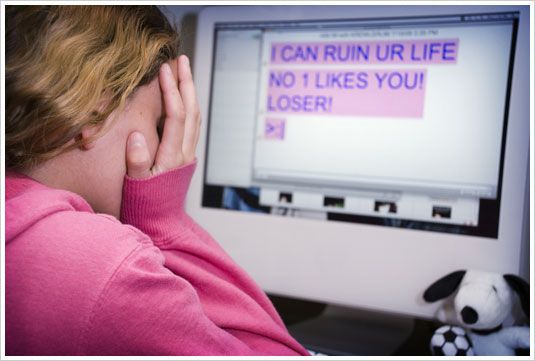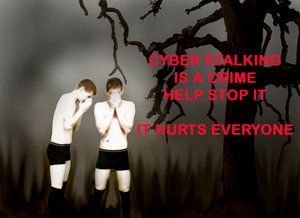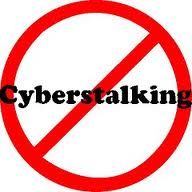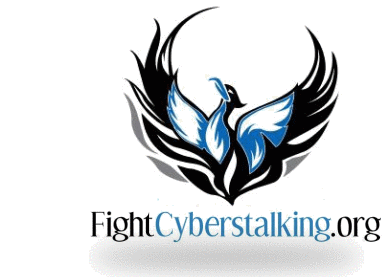← Mentorships
Cyberbullying 
There seems to be a lot of cyberbullying going on these days and since we have so many young people on this site I thought it might be good to address it here on VR as well.
If you are a victim of a bully, hang in there.
You are not alone, and it isn’t your fault either.
Stay strong, ignore them, do NOT delete the hurtful messages because they are evidence; and TELL SOMEONE. You call your internet provider and the local police if necessary.
Legal definition
Cyberbullying is defined in legal glossaries as
actions that use information and communication technologies to support deliberate, repeated, and hostile behavior by an individual or group, that is intended to harm another or others.
use of communication technologies for the intention of harming another person
use of internet service and mobile technologies such as web pages and discussion groups as well as instant messaging or SMS text messaging with the intention of harming another person.
Examples of what constitutes cyberbullying include communications that seek to intimidate, control, manipulate, put down, falsely discredit, or humiliate the recipient. The actions are deliberate, repeated, and hostile behavior intended to harm another. Cyberbullying has been defined by The National Crime Prevention Council: “when the Internet, cell phones or other devices are used to send or post text or images intended to hurt or embarrass another person.
A cyberbully may be a person whom the target knows or an online stranger. A cyberbully may be anonymous and may solicit involvement of other people online who do not even know the target.

Cyberbullying vs. cyberstalking
Cyberstalking
The practice of cyberbullying is not limited children and, while the behavior is identified by the same definition when practiced by adults, the distinction in age groups sometimes refers to the abuse as cyberstalking or cyberharassment when perpetrated by adults toward adults. Common tactics used by cyberstalkers are performed in public forums, social media or online information sites and are intended to threaten a victim's earnings, employment, reputation, or safety. Behaviors may include encouraging others to harass the victim and trying to affect a victim's online participation. Many cyberstalkers try to damage the reputation of their victim and turn other people against them.
Cyberstalking may include false accusations, monitoring, making threats, identity theft, damage to data or equipment, the solicitation of minors for sex, or gathering information in order to harass. A repeated pattern of such actions and harassment against a target by an adult constitutes cyberstalking. There are consequences of law in offline stalking and online stalking, and cyber-stalkers can be put in JAIL.
Cyberstalking is a form of cyberbullying.
Methods used
Manuals to educate the public, teachers and parents summarize, "Cyberbullying is being cruel to others by sending or posting harmful material using a cell phone or the internet." Research, legislation and education in the field are ongoing. Basic definitions and guidelines to help recognize and cope with what is regarded as abuse of electronic communications have been identified.
▪ Cyberbullying involves repeated behavior with intent to harm and repeated nature
▪ Cyberbullying is perpetrated through Harassment, Cyberstalking, Denigration (sending or posting cruel rumors and falsehoods to damage reputation and friendships), Impersonation, Exclusion (intentionally and cruelly excluding someone from an online group)
Cyberbullying can be as simple as continuing to send e-mail or text harassing someone who has said they want no further contact with the sender. It may also include public actions such as repeated threats, sexual remarks, pejorative labels (i.e., hate speech) or defamatory false accusations), ganging up on a victim by making the person the subject of ridicule in online forums, hacking into or vandalizing sites about a person, and posting false statements as fact aimed a discrediting or humiliating a targeted person. Cyberbullying could be limited to posting rumors about a person on the internet with the intention of bringing about hatred in others' minds or convincing others to dislike or participate in online denigration of a target. It may go to the extent of personally identifying victims of crime and publishing materials severely defaming or humiliating them.
Cyberbullies may disclose victims' personal data (e.g. real name, home address, or workplace/schools) at websites or forums or may use impersonation, creating fake accounts, comments or sites posing as their target for the purpose of publishing material in their name that defames, discredits or ridicules them.
Some cyberbullies may also send threatening and harassing emails, instant messages or texts to the victims. Others post rumors or gossip and instigate others to dislike and gang up on the target.
Currently, there are 45 cyberstalking (and related) laws on the books.

Adults
Stalking online has criminal consequences just as physical stalking. A target's understanding of why cyberstalking is happening is helpful to remedy and take protective action to restore remedy. Cyberstalking is an extension of physical stalking. Among factors that motivate stalkers are: envy, pathological obsession (professional or sexual), unemployment or failure with own job or life; intention to intimidate and cause others to feel inferior; the stalker is delusional and believes he/she "knows" the target; the stalker wants to instill fear in a person to justify his/her status; belief they can get away with it (anonymity). UK National Workplace Bullying Advice Line theorizes that bullies harass victims in order to make up for inadequacies in their own lives.
The US federal cyberstalking law is designed to prosecute people for using electronic means to repeatedly harass or threaten someone online. There are resources dedicated to assisting adult victims deal with cyberbullies legally and effectively. One of the steps recommended is to record everything and contact police.
Many cyberstalkers try to involve third parties in the harassment. They may claim the victim has harmed the stalker or his/her family in some way, or may post the victim's name and telephone number in order to encourage others to join the pursuit.
Cyberstalking is the use of the Internet or other electronic means to stalk or harass an individual, a group of individuals, or an organization. It may include false accusations, monitoring, making threats, identity theft, damage to data or equipment, the solicitation of minors for sex, or gathering information in order to harass. The definition of "harassment" must meet the criterion that a reasonable person, in possession of the same information, would regard it as sufficient to cause another reasonable person distress. Cyberstalking is different from spatial or offline stalking in that it occurs through the use of electronic communications technology such as the internet. However, it sometimes leads to it, or is accompanied by it.Both are criminal offenses. Cyberstalking shares important characteristics with offline stalking. Many stalkers - online or off - are motivated by a desire to control their victims.
A cyberstalker may be an online stranger or a person whom the target knows. A cyberstalker may be anonymous and may solicit involvement of other people online who do not even know the target.
Cyberstalking is a criminal offenses that comes into play under state anti-stalking laws, slander laws, and harassment laws. A cyberstalking conviction can result in a restraining order, probation, or even criminal penalties against the assailant, including jail.

Cyberterrorism : Broad definition
Cyberterrorism is defined by the Technolytics Institute as "The premeditated use of disruptive activities, or the threat thereof, against computers and/or networks, with the intention to cause harm or further social, ideological, religious, political or similar objectives. Or to intimidate any person in furtherance of such objectives." The term was coined by Barry C. Collin.
Harassment by computer
is a crime in several U.S. states (see computer crime). It is distinct from stalking in that stalking typically requires two or more contacts, whereas harassment by computer may be a single incident. It is also different from regular harassment, because the offense typically encompasses a range of crimes that would not be considered harassment if conducted in person.
Connecticut was the first state to pass a statute making it a criminal offense to harass someone by computer. Michigan, Arizona, and Virginia have also passed laws banning harassment by electronic means.
Harassment by computer statutes are typically distinct from cyberbullying laws, in that the former usually relates to a person's "use a computer or computer network to communicate obscene, vulgar, profane, lewd, lascivious, or indecent language, or make any suggestion or proposal of an obscene nature, or threaten any illegal or immoral act," while the latter need not involve anything of a sexual nature.
Harmful effects
Research had demonstrated a number of serious consequences of cyberbullying victimization.For example, victims have lower self-esteem, increased suicidal ideation, and a variety of emotional responses, retaliating, being scared, frustrated, angry, and depressed.
One of the most damaging effects is that a victim begins to avoid friends and activities, often the very intention of the cyber-bully.
Cyberbullying campaigns are sometimes so damaging that victims have committed suicide. There are at least four examples in the United States where cyber-bullying has been linked to the suicide of a teenager. The suicide of Megan Meier is a recent example that led to the conviction of the adult perpetrator of the attacks.
Intimidation, emotional damage, suicide
According to the Cyberbullying Research Center, "there have been several high‐profile cases involving teenagers taking their own lives in part because of being harassed and mistreated over the Internet, a phenomenon we have termed cyberbullicide – suicide indirectly or directly influenced by experiences with online aggression."
The reluctance youth have in telling an authority figure about instances of cyberbullying has led to fatal outcomes. At least three children between the ages of 12 and 13 have committed suicide due to depression brought on by cyberbullying, according to reports by USA Today and the Baltimore Examiner. These would include the suicide of Ryan Halligan and the suicide of Megan Meier, the latter of which resulted in United States v. Lori Drew.
Lost revenue, threatened earnings, defamation
Studies are being conducted by large companies to gauge loss of revenue through malicious false postings. Cyberstalkers seek to damage their victim's earnings, employment, reputation, or safety. A 2008 High Court ruling determined that, generally speaking, slander is when a defamatory statement has been made orally without justification. Libelous statements are those that are recorded with some degree of permanence. This would include statements made by email or on online bulletin boards.
Lawmakers are cracking down on Cyberbullying. read about it
Here
Victims of cyberbullying fight back. read about here
Here
Links for more information :
Cyber bullying vs. cyberstalking
Cyberstalking
What to do
Cyberbullying NCPC
Cyberterrorism
Harassment
Cyberbully Help
Stop cyberbullying
Stop cyberbullying. gov
//////////////////////////////////////////////
In the founding documents of this country it states that the citizens are obligated as patriots :
To take back a corrupt government. To uphold the principles of freedom. To be secure in our homes, property and papers. And the right to engage in the pursuit of happiness. It seems that the pursuit of luxury, wealth, fame, and generally self-absorbed thought processes are the common goals of the world in this day and age. Many Americans have forgotten how many lives have been lost, and are being lost to have the freedoms most take for granted. Picture George Washington, Thomas Jefferson and Ben Franklin and how they fought to be free. And yet today not enough people care to do something about what is happening to our counter, much less our communities, families and each other. What happened to hard Work, Integrity, Honor, Compassion, Altruism, etc…?
They seem harder to find than ever before. We need to stand up for what is right in every aspect of our lives to the best of our ability. Let us not turn a blind eye or a deaf ear to these matter. We cannot afford to think someone else will do it.
So, please help others stand up against bullying and other injustices in this world.

NEW MEMBERS
Whelp (1)
20:59 - December 15 2025

Whelp (1)
17:10 - December 15 2025

Leech (2)
03:06 - December 14 2025
REAL VAMPIRES LOVE VAMPIRE RAVE
Vampire Rave is a member of
Page generated in 0.0474 seconds.










